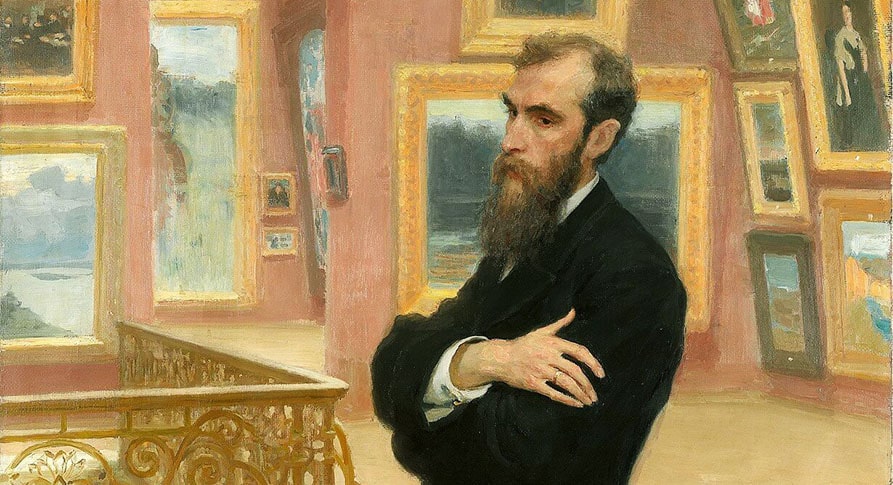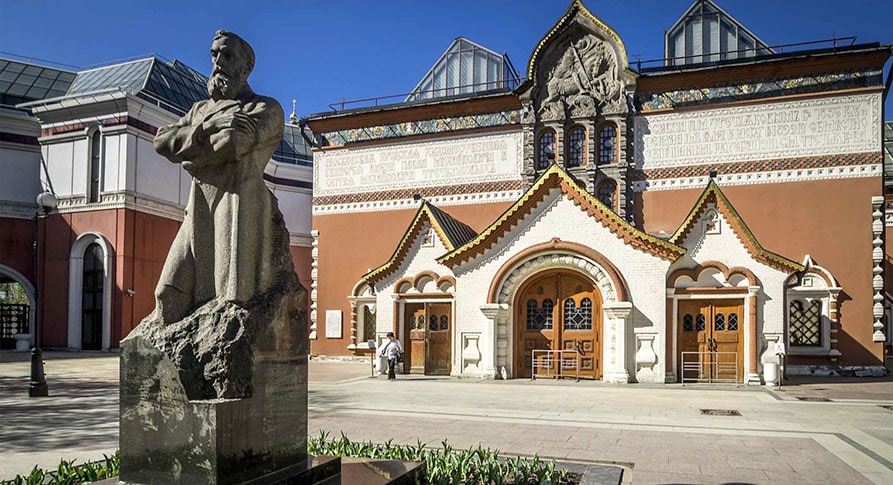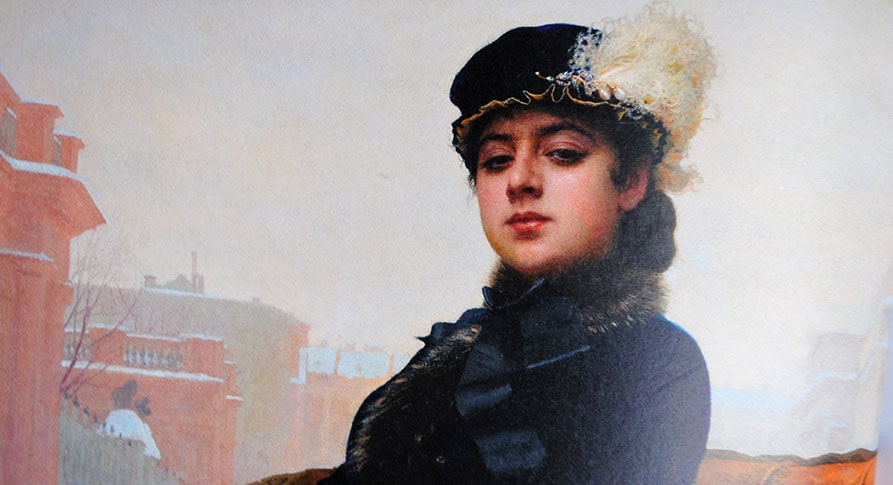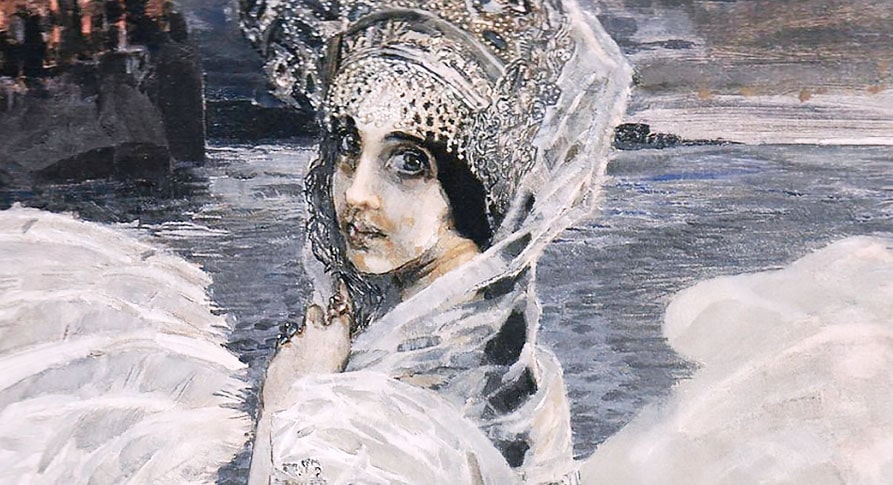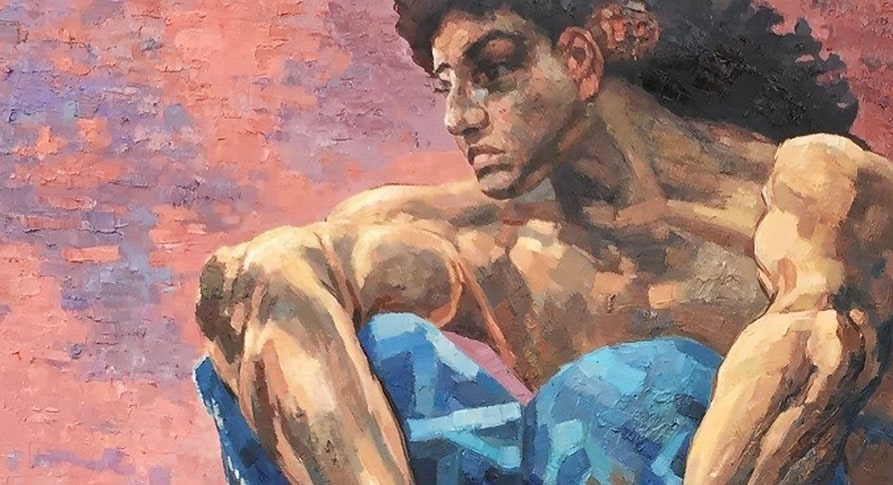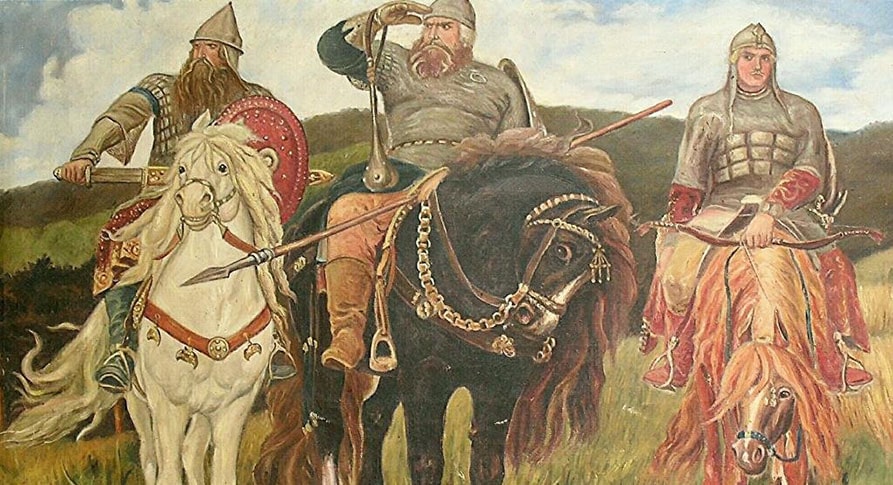State Tretyakov Gallery
city
Moscow / Russia
The world-famous State Tretyakov Gallery, a unique treasury of national fine art is located on a little alley in Zamoskvorechye former merchant district where it’s so nice to get lost in an enjoyable ambience of picturesque architecture and peace… The exotic boyar castle designed by painter Victor Vasnetsov in a traditional Russian fairytale style harbors a collection of undisputed masterpieces by outstanding Russian artists, an overall historical narrative of Russian painting from the 11th till early 20th centuries, totally more than 190.000 works. Ideal for art lovers!
If a work of art is a window to look into the past, then your visit of the Tretyakov Gallery will be a real journey through time. Here, all Russian history, full of secrets and riddles, is mirrored in the paintings. You can study it while admiring the highlights of the museum and decoding symbols hidden in the pictures.
This unrivalled gallery was named after its founder Pavel Tretyakov (1832-1898), entrepreneur, philanthropist and major patron of 19th century Russian art. The history of the collection dates back to 1859 when he bought first paintings to adorn his home in Moscow. Next years, he continued purchasing dozens of new artworks at exhibitions and in the studios of young unknown but talented artists, whom he sponsored generously.
Tretyakov was a patron of the Peredvizhniki, or Wanderers, a group of 19th-century painters who broke away from the conservative Academy of Arts and started depicting common people’s day-to-day life. Nowadays, these are among Russia’s most celebrated painters, and the gallery boasts a lot of their masterpieces.
Over four decades, without having any special art education, Tretyakov acquired 2,000 paintings, drawings and sculptures - prized works, real hidden gems of Russian art. His dream was to establish a large museum open to everyone regardless of class or wealth to help common people understand and admire our national art. The collector was saying that ‘for me, а true and ardent lover of painting, there can be no finer wish than to found а universally accessible repository of the fine arts, which will benefit many and give pleasure to all.’
The project materialized in 1881 with the inauguration of his private gallery; in 1892, after he donated his treasure trove to the Moscow city, it was open for public. Tsar Alexander III offered Pavel Tretyakov a noble title for his service to Russia, but the modest and not ambitious maecenas declined; instead, he was made an Honorary Citizen of Moscow in December 1896.
After the Bolshevik revolution of 1917 Vladimir Lenin acknowledged the gallery was one-of-a-kind national treasure and his 1918 decree even allowed the museum to keep the name of Tretyakov. The collection was selflessly preserved as the greatest value in the hardest years of the civil war of 1918-20 and the Great Patriotic War of 1941-45. The museum continued to flourish in the Soviet period, its collection increased considerably, and hugely successful exhibitions were held both in Russia and abroad. Now YOU delve into this inimitable world of spiritual beauty: the mysterious soul of Russia is here!
The halls of Russian medieval art feature the most sacred and cherished heritage: the finest and world’s richest collection of icons, the Orthodox holy images painted on wood planks. For many Middle Age centuries icon painting was Russia’s leading art form. Not everyone had permission to paint them: it required many years of training, strict adherence to church canon and blessing of the diocesan authority. Many of these priceless icons of XII-XVII are works by anonymous artists, while among the best-known pieces are the Byzantine Virgin Of Vladimir, attributed by the legend to St. Luke the Evangelist and the most celebrated Russian icon of The Trinity by monk Andrey Rublev (approx. 1360-1430), the ingenious painter who himself became the icon of Russia's centuries-long culture.
We continue with an exciting stroll by museum halls to admire magnificent artworks of the 18th-19th centuries. You will be able to gaze your own eyes on great canvases that before you could only admire in art albums and catalogues of international exhibitions. The best lifetime portraits of Alexander Pushkin by Orest Kiprenskiy and of Fiodor Dostoyevskiy by Vasiliy Perov; The Morning In The Pine Forest by Ivan Shishkin; The Horsewoman by Karl Brullov; Christ In The Wilderness and Unknown Woman by Ivan Kramskoy; Demon by Mikhail Vrubel; Alionuska and Prince Ivan Riding The Grey Wolf by Viktor Vasnetsov; The Morning Of The Streltsy Execution and Taking The Snow Fort by Vasily Surikov; The Small Moscow Yard by Vasiliy Polenov to name a few.
And of course you will focus at the masterpieces that for various reasons, never venture beyond their museum walls. One of these is the awesome The Appearance of Christ before the People by Alexander Ivanov. Get stunned at the giant canvas (5,4m x 7,5m) that the artist painted for 20 years. A bit smaller (3m × 5,8m), yet not less expressive is The Boyard Morozova by Vasily Surikov.
You will learn about different epochs and schools of national painting and the most prominent artists. Our highly knowledgeable guide will comment on how the cultural context, the inner motifs and the private life of creatives influenced their works, how canvases absorbed the human feelings and were telling their ideas. We will unveil the symbols and hidden gist in the pictures. You will step into the paintings, lose yourself in them for a while and enjoy the unforgettable experiences.
Perceive the might and invincible spirit of ancient Rus emanated by The Bogatyrs by Viktor Vasnetsov. Marvel at hypnotic landscapes like Isaac Levitan’s The Birch Forest and The Golden Autumn. Inhale the gusty sea breeze and feel the waves splashes on your skin near the seascapes of a fantastic marine painter Ivan Aivazovskiy. Smell a sweet scent of ripe fruits and of carefree days of youth from the sunny picture The Girl With The Peaches by Valentin Serov. There's a bracing chill in the air near the spring painting The Rooks Have Come Back by Alexey Savrasov. Visages of royalty and aristocracy in portraits by Orest Kiprensky and Fedor Rokotov breathe real grandeur. And amazingly beautiful eyes of both noble and rustic girls will return to your dreams long after…
Each painting has its unique biography, and some of them are also involved in mystical stories: thought to be able to steal the energy, and even drive someone mad… For example, Ilya Repin's Ivan the Terrible And His Son Ivan which at the time when Tretyakov bought it, was a forbidden artwork. Once news spread of this picture in the gallery, visitors flocked to see it. Watching Ivan's wrecked figure few minutes after he accidently killed his heir, really makes your skin crawl! Maybe it's not by chance that the image of sinister Tsar was subject to vandal attempts to destroy it in 1913 and 2018? Another Gallery legend says that the magnificent portrait of Maria Lopukhiná by Borovikovsky keeps trapped her own soul which her father, the famous mystic Ivan Lopukhin inveigled there. Some visitors say they feel the penetrative gaze from the picture is sucking their force and will. The girls are not recommended to watch the picture for long, because the ghost can ruin their upcoming marriage… And Ivan Kramskoy's Mermaids sigh at night, museum curators say.
True or false? Well, what’s definite is that the great canvases of the past continually speak to us - do you hear? There are few places in the world where within a couple short hours you will meet so many wonderful people at once! And the Tretyakov Gallery visit will be an amazing experience you will cherish in your lifetime.
If a work of art is a window to look into the past, then your visit of the Tretyakov Gallery will be a real journey through time. Here, all Russian history, full of secrets and riddles, is mirrored in the paintings. You can study it while admiring the highlights of the museum and decoding symbols hidden in the pictures.
This unrivalled gallery was named after its founder Pavel Tretyakov (1832-1898), entrepreneur, philanthropist and major patron of 19th century Russian art. The history of the collection dates back to 1859 when he bought first paintings to adorn his home in Moscow. Next years, he continued purchasing dozens of new artworks at exhibitions and in the studios of young unknown but talented artists, whom he sponsored generously.
Tretyakov was a patron of the Peredvizhniki, or Wanderers, a group of 19th-century painters who broke away from the conservative Academy of Arts and started depicting common people’s day-to-day life. Nowadays, these are among Russia’s most celebrated painters, and the gallery boasts a lot of their masterpieces.
Over four decades, without having any special art education, Tretyakov acquired 2,000 paintings, drawings and sculptures - prized works, real hidden gems of Russian art. His dream was to establish a large museum open to everyone regardless of class or wealth to help common people understand and admire our national art. The collector was saying that ‘for me, а true and ardent lover of painting, there can be no finer wish than to found а universally accessible repository of the fine arts, which will benefit many and give pleasure to all.’
The project materialized in 1881 with the inauguration of his private gallery; in 1892, after he donated his treasure trove to the Moscow city, it was open for public. Tsar Alexander III offered Pavel Tretyakov a noble title for his service to Russia, but the modest and not ambitious maecenas declined; instead, he was made an Honorary Citizen of Moscow in December 1896.
After the Bolshevik revolution of 1917 Vladimir Lenin acknowledged the gallery was one-of-a-kind national treasure and his 1918 decree even allowed the museum to keep the name of Tretyakov. The collection was selflessly preserved as the greatest value in the hardest years of the civil war of 1918-20 and the Great Patriotic War of 1941-45. The museum continued to flourish in the Soviet period, its collection increased considerably, and hugely successful exhibitions were held both in Russia and abroad. Now YOU delve into this inimitable world of spiritual beauty: the mysterious soul of Russia is here!
The halls of Russian medieval art feature the most sacred and cherished heritage: the finest and world’s richest collection of icons, the Orthodox holy images painted on wood planks. For many Middle Age centuries icon painting was Russia’s leading art form. Not everyone had permission to paint them: it required many years of training, strict adherence to church canon and blessing of the diocesan authority. Many of these priceless icons of XII-XVII are works by anonymous artists, while among the best-known pieces are the Byzantine Virgin Of Vladimir, attributed by the legend to St. Luke the Evangelist and the most celebrated Russian icon of The Trinity by monk Andrey Rublev (approx. 1360-1430), the ingenious painter who himself became the icon of Russia's centuries-long culture.
We continue with an exciting stroll by museum halls to admire magnificent artworks of the 18th-19th centuries. You will be able to gaze your own eyes on great canvases that before you could only admire in art albums and catalogues of international exhibitions. The best lifetime portraits of Alexander Pushkin by Orest Kiprenskiy and of Fiodor Dostoyevskiy by Vasiliy Perov; The Morning In The Pine Forest by Ivan Shishkin; The Horsewoman by Karl Brullov; Christ In The Wilderness and Unknown Woman by Ivan Kramskoy; Demon by Mikhail Vrubel; Alionuska and Prince Ivan Riding The Grey Wolf by Viktor Vasnetsov; The Morning Of The Streltsy Execution and Taking The Snow Fort by Vasily Surikov; The Small Moscow Yard by Vasiliy Polenov to name a few.
And of course you will focus at the masterpieces that for various reasons, never venture beyond their museum walls. One of these is the awesome The Appearance of Christ before the People by Alexander Ivanov. Get stunned at the giant canvas (5,4m x 7,5m) that the artist painted for 20 years. A bit smaller (3m × 5,8m), yet not less expressive is The Boyard Morozova by Vasily Surikov.
You will learn about different epochs and schools of national painting and the most prominent artists. Our highly knowledgeable guide will comment on how the cultural context, the inner motifs and the private life of creatives influenced their works, how canvases absorbed the human feelings and were telling their ideas. We will unveil the symbols and hidden gist in the pictures. You will step into the paintings, lose yourself in them for a while and enjoy the unforgettable experiences.
Perceive the might and invincible spirit of ancient Rus emanated by The Bogatyrs by Viktor Vasnetsov. Marvel at hypnotic landscapes like Isaac Levitan’s The Birch Forest and The Golden Autumn. Inhale the gusty sea breeze and feel the waves splashes on your skin near the seascapes of a fantastic marine painter Ivan Aivazovskiy. Smell a sweet scent of ripe fruits and of carefree days of youth from the sunny picture The Girl With The Peaches by Valentin Serov. There's a bracing chill in the air near the spring painting The Rooks Have Come Back by Alexey Savrasov. Visages of royalty and aristocracy in portraits by Orest Kiprensky and Fedor Rokotov breathe real grandeur. And amazingly beautiful eyes of both noble and rustic girls will return to your dreams long after…
Each painting has its unique biography, and some of them are also involved in mystical stories: thought to be able to steal the energy, and even drive someone mad… For example, Ilya Repin's Ivan the Terrible And His Son Ivan which at the time when Tretyakov bought it, was a forbidden artwork. Once news spread of this picture in the gallery, visitors flocked to see it. Watching Ivan's wrecked figure few minutes after he accidently killed his heir, really makes your skin crawl! Maybe it's not by chance that the image of sinister Tsar was subject to vandal attempts to destroy it in 1913 and 2018? Another Gallery legend says that the magnificent portrait of Maria Lopukhiná by Borovikovsky keeps trapped her own soul which her father, the famous mystic Ivan Lopukhin inveigled there. Some visitors say they feel the penetrative gaze from the picture is sucking their force and will. The girls are not recommended to watch the picture for long, because the ghost can ruin their upcoming marriage… And Ivan Kramskoy's Mermaids sigh at night, museum curators say.
True or false? Well, what’s definite is that the great canvases of the past continually speak to us - do you hear? There are few places in the world where within a couple short hours you will meet so many wonderful people at once! And the Tretyakov Gallery visit will be an amazing experience you will cherish in your lifetime.
city
Moscow / Russia

